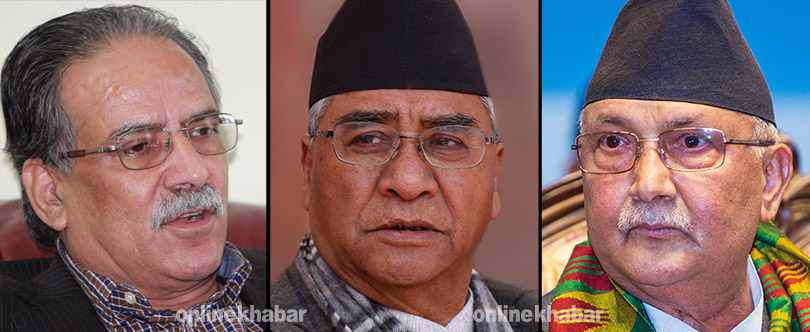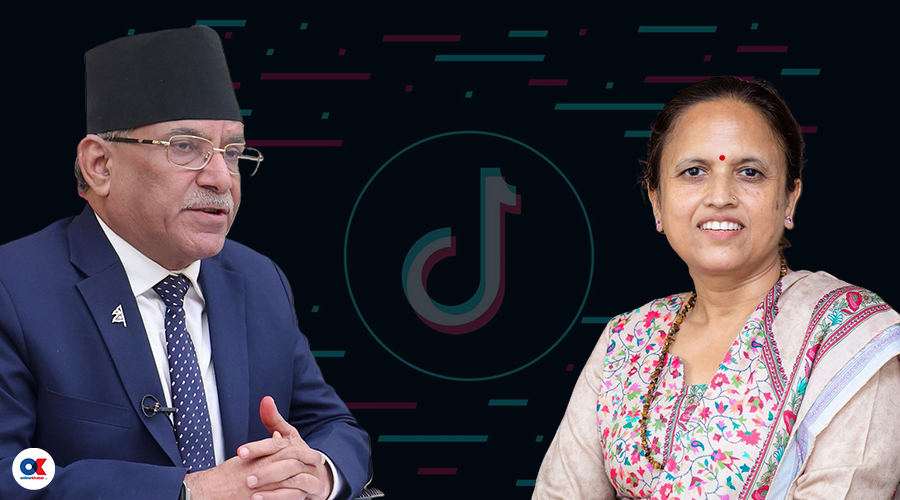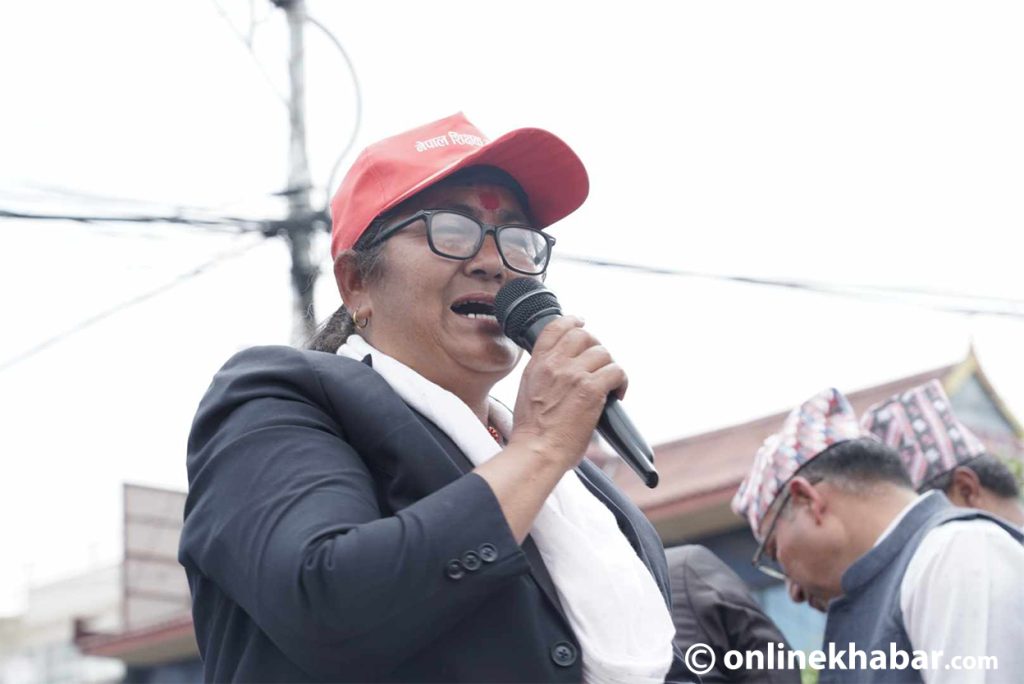
On November 13, the government of Nepal banned TikTok stating the platform disrupted social harmony along with family structure and relationships. The reaction since has been mixed. People have been criticising the government’s decision stating it violated people’s constitutional rights, but many have shown support on social media stating the government was right to ban Tiktok.
Beyond the demonstration in Maitighar Mandala on Monday, there appears to be minimal opposition to the ban. The evident support from the majority suggests that the morale of the ministers has likely experienced a boost.
Openness has long been a hallmark and valuable asset of Nepali society. The 104-year-old autocratic Rana regime and the 30-year-old panchayat system were dismantled due to the citizens’ yearning for freedom. This desire for freedom was evident in historical movements, such as the 2005/06 protests, where people took to the streets against pro-autocracy forces and those threatening freedom.
This is why, imposing a ban on TikTok appears to be unreasonable in a country with a republican system of government, where controlling any means of expression is not conceivable.
Social point of view

Sociologist Dipesh Ghimire suggests examining the demographics of those supporting the decision to ban TikTok.
“There is a noticeable trend where men tend to favour the government’s decision, while women appear to be against it,” Ghimire told Onlinekhabar. “The men have developed a perception that TikTok has led to an increase in vulgarity, and some believe it is appropriate to regulate it.”
Sociologist Ghimire’s argument holds weight, especially when considering the data on TikTok usage. The platform boasts a substantial number of female users. This is opposite to the the broader context of social media use which is dominated by men. For instance, on Facebook, which has around 3 billion active users, 56.5 per cent are male, while only 43.5 per cent are female. Conversely, TikTok exhibits a contrasting trend, with 55.3 per cent of its users being female and 44.7 per cent male.
As outlined in an article related to TikTok, the primary factor contributing to the platform’s high number of female users is its content accessibility. Unlike other social media platforms that rely on friend or follower connections, TikTok’s algorithm is interest-based. This design allows the stories shared by women on TikTok to easily reach a broad audience, resulting in a larger female user base.
The most popular category or genre on TikTok is dance. Influencers create choreography using popular songs, inspiring people worldwide to follow suit. From professional dancers to everyday individuals, thousands of videos in this category are uploaded daily.
Anthropologist Shyamu Thapa Magar highlights that TikTok’s prevalence among female users in Nepal is due to the convenience it provides.
“Men have been expressing themselves for years. However, TikTok has provided women with the facility to easily express their opinions and showcase their talents,” she says suggesting that working women are using TikTok as a platform to express their concealed desires.
Read also: TikTok ban: Assessing the impact on Nepal’s democratic values
The breach of freedom boundaries in the pursuit of creating videos and gaining viewership is evident, not only on TikTok but also on platforms like Facebook or YouTube with features like reels. Videos of this nature have found a significant presence on various social media platforms. However, a prevalent belief is that TikTok, in particular, has led to family breakdowns and an increase in perceived vulgarity, a viewpoint supported by many.
Magar argues that the perception that vulgarity has entered through TikTok is rooted in the psychology of a male-dominated society.
“You hear the men’s opinion you realise how worried they are about women who use TikTok. This is because they have not been able to control a woman’s body,” says Magar.
However, she believes that the decision to ban may have been welcomed after TikTok breached the established ‘ethics’ boundaries over the years.
Observing TikTok, one can witness young women from distant parts of Nepal and abroad expressing themselves freely through dance and speech. It can be assumed that the government and society’s reluctance to embrace such freedom is reflected in their language.
“TikTok gave young women a space to express themselves. The men don’t like that,” says Magar.
Sociologist Ghimire also contends that TikTok has presented a challenge to the facade of Nepali society.
“Nepali society is contradictory and deceptive. It claims to be one thing, but behind closed doors, it is something else. It doesn’t show openly, but if you observe closely, you will see the same things happening. It claims to be straightforward, but if you question it in our own lives, it becomes an exception,” he says. “For a long time, our society has been running on the basis of deception.”
However, he contends that the narrative of increased vulgarity in society due to TikTok is gaining traction, as it has dismantled the facade of Nepali society, a facade indirectly supported by major political parties.
A common enemy of the parties

There is also a political rationale behind the widespread support for the decision to ban TikTok. Successive governments have struggled to fulfil their promises, leading to an ongoing economic crisis and a significant outflow of people from the country. Whether for educational pursuits or employment opportunities, Nepalis have been departing the country in large numbers for years.
Now, the reality has become evident for everyone to witness. The current situation has reached a point where even individuals who initially expressed their commitment to residing in Nepal are reconsidering their decision, leading to widespread disappointment among the general populace.
Naturally, this frustration extends into the political system and those in governance. Social media, consistently amplifying popular trends, plays a role in making these sentiments go viral.
Even those who are against the current political system have used social media in an institutional form. Durga Prasai has spread rumours through social media. TikTok has become the most influential medium to spread the rumours spread by Prasai who once used to be in league with the leaders.
If someone attacks the freedom of others to use the value of their freedom, it is not acceptable. Therefore, Prasai should either prove the accusations against the political leadership or face legal action. It cannot be discounted as freedom of expression.
However, the current legislation may be inadequate for addressing these concerns, as laws were crafted in the absence of prominent social media platforms such as TikTok, Facebook, and Twitter. Therefore, the need for new legislation is apparent. On November 9, the government endorsed directives to regulate social media use and provided preliminary approval to introduce a bill in this regard.
Despite that, the government strangely have decided to ban TikTok rather than regulate it.
“There is a directive to regulate social media, and we are in the process of crafting a law,” said Prakash Jwala, the minister for the Ministry of Physical Infrastructure and Transport.
He clarified that the government does not intend to control all social media but is taking this step to ensure the regulation of social media, and the decision to ban TikTok is part of that regulatory effort.

Major political parties have expressed support for the government’s decision. Within the ruling coalition, besides Nepali Congress General Secretaries Gagan Thapa and Bishwa Prakash Sharma, leader Shekhar Koirala and others are in favour of banning TikTok. Notably, the main opposition UML did not register any protests against the decision.
In a meeting convened by Prime Minister Pushpa Kamal Dahal on November 7, KP Sharma Oli, the leader of the opposition party and a supporter of the 12-point agreement, not only advocated for a ban on TikTok but also expressed his readiness to publicly support such a decision if the government chose to implement it.
President of the Nepali Congress, Sher Bahadur Deuba, has also silently agreed to this. Sociologist Ghimire says that except for a few political leaders, the majority of the leaders have the mentality that they can control their existing challengers if they can control TikTok.
Apart from the senior leaders of major parties, cadres and other political figures also support the ban on TikTok.
According to Search Engine Journal, there are 4.8 billion social media users globally. On average, a user engages with six or more social networks each month, dedicating approximately two hours and 24 minutes daily. Notably, TikTok captures a significant portion of users’ time, with an average monthly usage of 31 hours and 32 minutes per user.
The increasing addiction to TikTok within families has led ordinary individuals to support the ban. A leader, advocating for the incorporation of TikTok through legislation instead of a ban, notes that while teenagers express frustration, others who are affected alongside users have not opposed the ban.


























